In previous studies, variations or zincemia reductions were observed in calves that were experimentally challenged with infectious bovine rhinotracheitis virus (IBR) and in animals with chronic BRD.
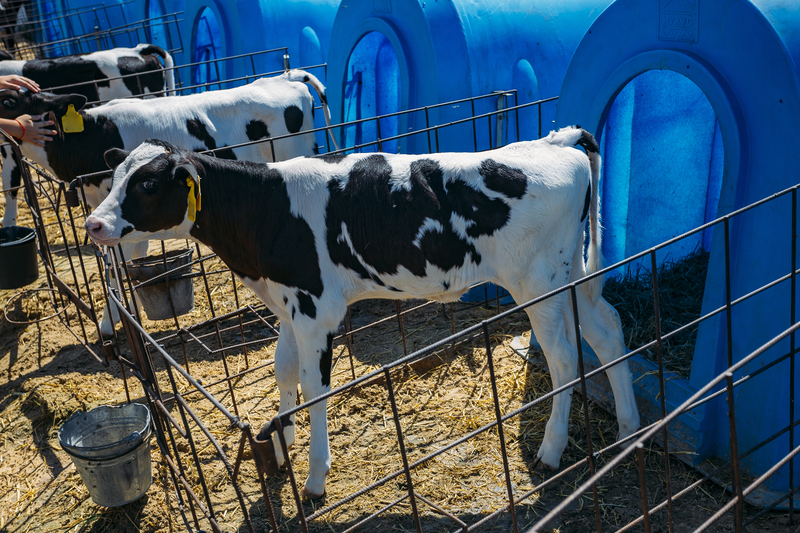 20 Oct 2022
20 Oct 2022
Zinc (Zn) is an essential mineral in the growth and development of animals, where it plays a catalytic, structural and regulatory role in cellular activity.
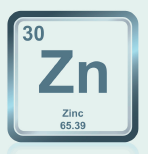
Zn is part of more than 300 enzymes and 900 genome transcription activating factors, which highlights the importance of this mineral in animal homeostasis.
For such reason, the lack of Zn in cattle generates varied and non-specific consequences. Amongst which there are:
Zn does not have a storage organ to help maintain its normal levels during consumptions reductions. However, it is considered that there are small reserves that buffer imbalances in all cells, including plasma Zn, metallothionein-bound Zn, as well as Zn found within organelles. The latter includes the Golgi apparatus and the endoplasmic reticulum. [registered]
When animal diets contain lower Zn amounts than what is required, endogenous losses are limited and absorption efficiency increases (King et al., 2001).
These mechanisms are well regulated by two conveyor families:
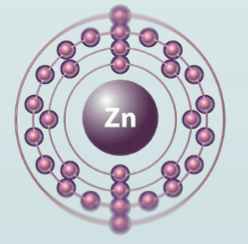
It is considered that blood Zn levels(zincemia) are normal when they are above 90 μg / dl, while values under 80 μg / dl indicate a deficiency, which establishes a marginal range between them. However, zincemia is usually an unstable marker and can vary without clinical consequences for the animal.
In rodents, zincemia reductions have been reported due to inflammation, trauma, infection, or stress, as part of the acute phase response (Lichten and Cousins, 2009; Aydemir et al., 2012; Aburto-Luna et al., 2017).
On the other hand, little is still known about zincemia variations during stressful situations and/or disease in cattle.
Bovine respiratory disease
Bovine respiratory disease (BRD) is the leading cause of death in feedlot farms in Argentina and the second most important in calves in extensive farmed farms (Costa et al., 2004).
Although BRD is the product of a complex interaction between stress, viruses and bacteria (Fazzio et al., 2010-a); it is widely accepted that Mannheimia haemolytica (MH) plays a determining role in the pathophysiology of the disease.
In previous studies, variations or zincemia reductions were observed in calves that were experimentally challenged with infectious bovine rhinotracheitis virus (IBR) and in animals with chronic BRD.
However, there are no studies conducted in calves with acute respiratory infections from bacterial origin where zincemia was evaluated.
Therefore, knowing the variations in zincemia, associated with MH infections, will contribute to a better interpretation of Zn status in calves.
![]()
Materials and methods
To verify the working hypothesis, an experimental study was carried out at the Large Animal Teaching Hospital belonging to the Faculty of Veterinary Sciences at UNLP. The trial included 11 male Holstein breed calves (experimental units),aged between 15 and 20 days old.
Feed and housing conditions
The calves came from a nearby establishment and were housed overnight in group boxes (4 animals/box) of cement floor with a straw bed. They were then transferred to a nearby paddock with an individual stake system during the day. The animals were supplied with 4 liters of commercial milk substitute per day, divided into two bucket intakes of 2 liters each (AM-PM). At the end of each delivery, the remaining volume was recorded to measure milk substitute consumption. In addition, they were given ad libitum feed and consumption was quantified in grams at the end of each day throughout the trial.
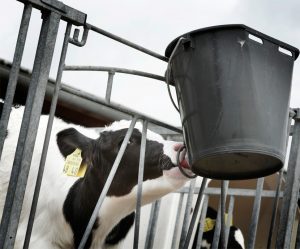
Clinical evaluation and experimental infection
Before starting the sampling stage,a general clinical examination of the 11 calves was carried out. Determining that these were considered to be healthy. All calves were inoculated with a field strain of MH (Bacteriological Diagnostic Laboratory, FCV-UNLP), which was considered as Day 0. After inoculation, clinical evaluations were performed until the appearance of specific clinical signs for BRD.
Treatment criteria
Parameters were recorded in order to classify those animals that reached grade 3 as sick. This classification was based on the scale proposed by Hanzlicek (2010), which uses the observation/measurement of rectal body temperature, respiratory rate, respiratory pattern, nasal secretions and eye secretions to classify animals in four degrees:
Once the patient criterion (grade 3) was met, a single treatment with tilmicosin was administered subcutaneously.
DIscharge criteria
Once the treatment was administered, the animals were evaluated daily until clinical discharge. This was carried out when all the aforementioned parameters were considered to be within physiological range.
Blood sampling
Blood samples were taken serialized in time, in relation to the day of inoculation (DAY 0), days -6, -1, 1, 2, 3, 4, 6, 8, 10.
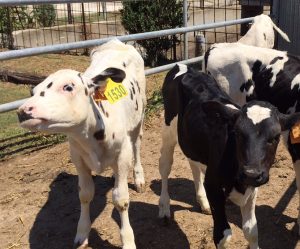
Results
All of the animals included in the present trial were clinically ill (grade 3) 2 days after the experimental inoculation with MH.
Amongst the variables which were included as zincemia predictors, only the time (DAY) was statistically significant, (p≤0.0001). Milk consumption showed a trend (p=0.08), while food consumption was not statistically significant (p ≥0.1).
The lowest mean zincemia values (57.2 μg/dL) were observed during day 2 after inoculation. The observed zicemia on day 2 after inoculation was significantly lower than the mean zincemia for the rest of the days,except for the value recorded on day 1. In turn, it was observed that zincemia measured on the last day (day 10) presented a reduction in its mean value, being significantly lower than the mean zincemia values for days -6, -1, 3.4 and 8. However, it was not as low as the mean values for days 1 and 2.
The mean zincemia values for each sampling point are presented in Figure 1, the bars being the magnitude of the standard error of the mean (CMM).
Figure 1. Mean zincemia values, expressed in μl/dl, for each sampling day in calves experimentally inoculated with Mannheimia haemolytica
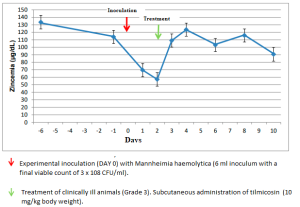
Discussion
Zincemia is the diagnostic tool available to assess Zn status in cattle. Its values can altered by changes in animals’ health status.
The zincemia values found on days 1 and 2 after experimental inoculation were below 80 μg/dL. Which is the minimum established limit within the indicated marginal range.
In a trial by Orr et al. (1990)they also observed decreased zincemia 4 days after intranasal inoculation with IBR virus. It was at this time that peak morbidity occurred. These findings are similar to those observed in the present trial, where the lowest blood zinc values were found during the clinical signs of disease.
Although the causes for reduced zincemia are still unknown, it is hypothesized that it could be associated with a mechanism within the host. A mechanism that aims to reduce the level of Zn available for pathogenic microorganisms. As these require its uptake for their proliferation.
A potential mechanism could be through the release of cytokines, including Interleukin 1β (IL-1β) and Interleukin 6 (IL-6) which are responsible for an increase in mRNA transcription of the zinc transporter ZIP14, mainly in the liver. This introduces Zn into the hepatocytes, causing a Zn reduction in the blood.
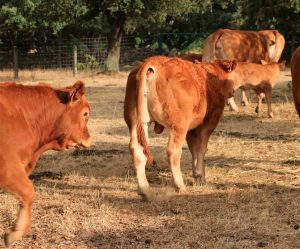
BRD is the main cause of morbidity and mortality during calves’ initiation period in Argentinian feedlot farms. Both IBR and MH have been found in clinical cases of BRD (Fazzio and Landoni, 2010-a; Fazzio et al., 2010-b).
Considering the clinical status of animals, when interpreting zinc blood levels, is useful for those who monitor mineral concentrations in animals within this type of farms.
Conclusions
Blood zinc values in MH-infected calves drop below the normal range and recover after treatment. This behavior should be considered when evaluating zincemia in animals at risk of acute respiratory infection where MH may be one of the etiological agents.
More trials are necessary to determine whether variations in zinc concentrations can modify productive parameters. Which could be avoided through mineral supplementation during the onset of disease.
Author: MV Esteban Galarza (Facultad de Cs Veterinarias, U.N.L.P., Rep. Argentina)
[/register]
Subscribe now to the technical magazine of animal nutrition
AUTHORS

Nutritional Interventions to Improve Fertility in Male Broiler Breeders
Edgar O. Oviedo Rondón
The Use of Organic Acids in Poultry: A Natural Path to Health and Productivity
M. Naeem
Synergistic Benefits of Prebiotics and Probiotics in Poultry, Swine, and Cattle
Gustavo Adolfo Quintana-Ospina
Hybrid Rye Potential in Laying Hen Feed Rations
Gwendolyn Jones
A day in the life of phosphorus in pigs: Part I
Rafael Duran Giménez-Rico
Use of enzymes in diets for ruminants
Braulio de la Calle Campos
Minerals and Hoof Health in the Pregnant Sow
Juan Gabriel Espino
Impact of Oxidized Fats on Swine Reproduction and Offspring
Maria Alejandra Perez Alvarado